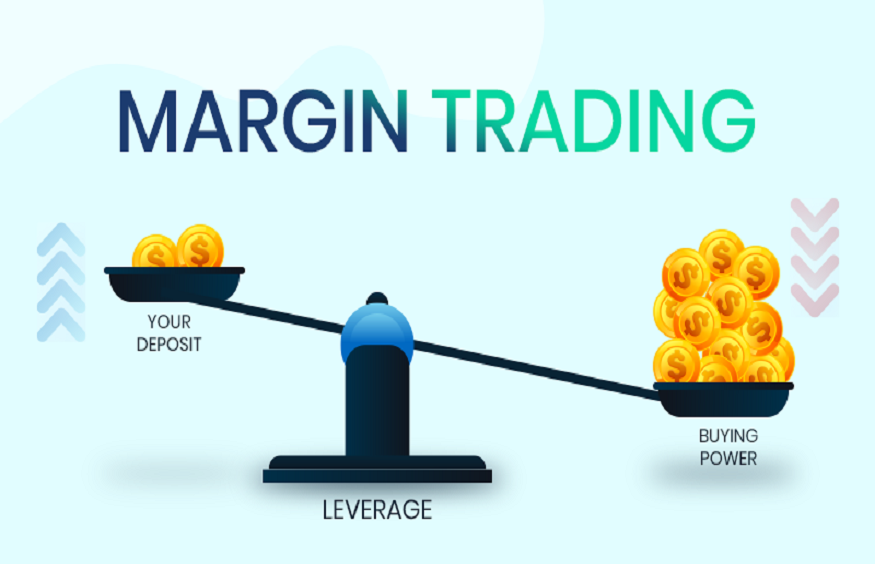 Understanding the differences between margin trading and share trading is crucial for anyone looking to invest in the stock market. Both methods allow investors to participate in the financial markets, but they operate on different principles and come with their own sets of risks and rewards. This blog will explore these differences in detail, helping you make informed decisions about your investment strategies. By the end, you will have a clearer understanding of how to navigate the world of trading, whether through a share market demat account app or by opening a demat account for margin trading.
Understanding the differences between margin trading and share trading is crucial for anyone looking to invest in the stock market. Both methods allow investors to participate in the financial markets, but they operate on different principles and come with their own sets of risks and rewards. This blog will explore these differences in detail, helping you make informed decisions about your investment strategies. By the end, you will have a clearer understanding of how to navigate the world of trading, whether through a share market demat account app or by opening a demat account for margin trading.
What is Margin Trading?
Margin trading in India involves borrowing funds from a broker to purchase securities, enabling investors to buy more shares than they could with their own money. The borrowed amount is referred to as the margin, which is a certain percentage of the total investment. This allows you to invest a larger sum, but it also involves higher risks, as losses can exceed the initial investment. Margin trading is regulated by SEBI to ensure investor protection.
Key Features of Margin Trading
- Leverage: Margin trading enables investors to leverage their investments, meaning they can control larger positions with less capital.
- Higher Risk: As the opportunity for profit grows, the risk of loss also increases. If the market moves against your position, you may face significant losses.
- Margin Calls: If your account value falls below a certain level, your broker may issue a margin call, requiring you to deposit more funds or sell some of your assets.
What is Share Trading?
In contrast, share trading typically refers to buying and selling stocks using your own capital without borrowing. When you engage in share trading, you purchase shares directly from the market and own them outright. Many investors use a share trading app to easily buy and sell stocks from their smartphones.
Key Features of Share Trading
- Ownership: When you purchase shares, you become a partial owner of the company.
- Lower Risk: Since you are not borrowing money, your potential losses are limited to your initial investment.
- Long-term Investment: Many investors choose share trading for long-term gains rather than short-term profits.
Key Differences Between Margin Trading and Share Trading
Here are some key differences between margin trading and share trading:
| Feature | Margin Trading | Share Trading |
| Leverage | Yes, allows borrowing funds | No, uses only available cash |
| Risk Level | Higher risk due to potential losses exceeding investment | Lower risk; losses limited to invested amount |
| Ownership | Partial ownership based on borrowed funds | Full ownership of purchased shares |
| Market Strategy | Often used for short-term gains | Typically favoured for long-term investments |
| Margin Calls | Possible if account value drops | Not applicable |
Advantages and Disadvantages
Advantages of Margin Trading
- Increased Buying Power: You can purchase more securities than with just your available cash.
- Potential for Higher Returns: If your investments perform well, your returns can be significantly amplified.
- Flexibility in Trading Strategies: Allows for various strategies, including short selling.
Disadvantages of Margin Trading
- Greater Losses Possible: If the market declines, losses can exceed your initial investment.
- Interest Costs: Borrowing funds incurs interest that can reduce overall profits.
- Margin Calls: You may be forced to sell assets or deposit more cash if your account value drops.
Advantages of Share Trading
- Lower Risk Exposure: You only lose what you invest.
- Simplicity: Easier to understand and manage without complex calculations.
- Long-term Growth Potential: Suitable for investors looking for steady growth over time.
Disadvantages of Share Trading
- Limited Potential Gains: Without leverage, profits may be lower than those achievable through margin trading.
- Less Flexibility for Quick Trades: Slower response times in volatile markets compared to margin trading.
Choosing Between Margin Trading and Share Trading
When choosing between margin trading and share trading, consider your risk tolerance and investment goals. Margin trading may be suitable for those with higher risks and seeking greater returns in a shorter timeframe, while share trading offers a more stable approach with lower risks. For beginners, starting with a simple share trading app can help them open Demat account and begin their journey in the stock market without overwhelming risks.
Conclusion
Both margin trading and share trading offer unique opportunities for investors but come with different levels of risk and complexity. Margin trading allows for greater leverage and potential returns but also poses higher risks and requires careful management of funds. On the other hand, share trading offers a simpler approach with lower risk exposure but limited potential gains. Whether you’re using a share market demat account app or considering opening a demat account for margin trading, understanding these key differences will help you make informed decisions as you navigate your investment journey.
